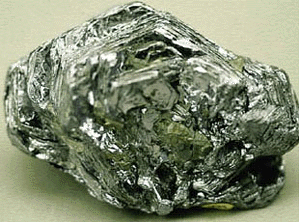
Like some vitamins, some minerals are potentially toxic in large doses:
- Calcium: Though clearly beneficial in amounts higher than the current RDAs, calcium is not problem-free:
• Doses higher than 4,000 milligrams a day may be linked to kidney damage.
• Megadoses of calcium can bind with iron and zinc, making it harder for your body to absorb these two essential trace elements.
- Phosphorus: Too much phosphorus can lower your body stores of calcium.
- Magnesium: Megadoses of magnesium appear safe for healthy people, but if you have kidney disease, the magnesium overload can cause weak muscles, breathing difficulty, irregular heartbeat and/or cardiac arrest (your heart stops beating).
- Iron: Overdosing on iron supplements can be deadly, especially for young children. The lethal dose for a young child may be as low as 3 grams (3,000 milligrams) elemental iron at one time. This is the amount in 60 tablets with 50 milligrams elemental iron each. For adults, the lethal dose is estimated to be 200 to 250 milligrams elemental iron per kilogram (2.2 pounds) of body weight. That’s about 13,600 milligrams for a 150-pound person — the amount you’d get in 292 tablets with 50 milligrams elemental iron each. New FDA rules require individual blister packaging for supplements containing more than 30 milligrams iron to foil tiny fingers and prevent accidental overdoses.
- Zinc: Moderately high doses of zinc (up to 25 milligrams a day) may slow your body’s absorption of copper. Doses 27 to 37 times the RDA (11 mg/males; 8 mg/females) may interfere with your immune function and make you more susceptible to infection, the very thing that normal doses of zinc protect against. Gram doses (2,000 milligrams/2 grams) of zinc cause symptoms of zinc poisoning: vomiting, gastric upset, and irritation of the stomach lining.
- Iodine: Overdoses of iodine cause exactly the same problems as iodine deficiency: goiter. How can that be? When you consume very large amounts of iodine, the mineral stimulates your thyroid gland, which swells in a furious attempt to step up its production of thyroid hormones. This reaction may occur among people who eat lots of dried seaweed for long periods of time.
- Selenium: In China, nutrition researchers have linked doses as high as 5 milligrams of selenium a day (90 times the RDA) to thickened but fragile nails, hair loss, and perspiration with a garlicky odor. In the United States, a small group of people who had accidentally gotten a supplement that mistakenly contained 27.3 milligrams selenium (436 times the RDA) fell victim to selenium intoxication — fatigue, abdominal pain, nausea and diarrhea, and nerve damage. The longer they used the supplements, the worse their symptoms were.
- Fluoride: Despite decades of argument, no scientific proof exists that the fluorides in drinking water increase the risk of cancer in human beings. But there’s no question that large doses of fluoride — which you’re unlikely to consume unless you drink well or groundwater in the western United States — causes fluorosis (brown patches on your teeth), brittle bones, fatigue, and muscle weakness. Over long periods of time, high doses of fluoride may also cause outcroppings (little bumps) of bone on the spine. Fluoride levels higher than 6 milligrams a day are considered hazardous.
- Molybdenum: Doses of molybdenum two to seven times the Adequate Intake (AI) (45 micrograms) may increase the amount of copper you excrete in urine.







